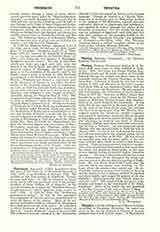

Thwing, THOMAS, VENERABLE, martyr, b. at Heworth Hall, near York, in 1635; suffered at York, October 23, 1680. His father was George Thwing, Esq., of Kilton Castle and Heworth, nephew of Venerable Edward Thwing; his mother was Anne, sister of the venerable confessor Sir Thomas Gascoigne, of Barn-brow Hall. Educated at Douai, he was sent to the mission in 1664 and labored in his native county. Until April, 1668, he was chaplain at Carlton Hall, the seat of his cousins the Stapletons. He next opened a school at Quosque, the dower-house of the Stapletons. When in 1677 the “Institute of Mary” began their foundation in the house given by Sir Thomas Gascoigne at Dolebank, Thwing became their chaplain, three of his sisters being of the community. It was there that he was arrested in the early part of 1679. At the time of the Titus Oates scare, two servants who had been discharged from Sir Thomas Gascoigne’s employ for dishonesty, sought vengeance and reward by disclosing a pretended plot on the part of Gascoigne and others to murder the king. In their first allegation no mention was made of Thwing. Gascoigne, Thwing, and others were removed to London for trial at Newgate. All were acquitted except Thwing, who was brought back to York for trial in March, 1680. Owing to his challenging the jurors, his trial was postponed to the summer assizes, and he was brought to the bar on July 29. He was refused an impartial jury, and was found guilty on the very same evidence upon which his relatives had been acquitted. Upon receiving sentence, which in consideration of his gentle birth was passed on him apart from the felons and murderers found guilty at the same assizes, humbly bowing his head he replied “Innocens ego sum.” The king at first reprieved him, but owing to a remonstrance of the Commons the death-warrant was issued on the day after the meeting of Parliament. He was drawn from York Castle, past the convent where his sisters were dwelling, to Tyburn, where the sentence was carried out. He declared his innocence, protested his loyalty to the king and his charity to his neighbor; prayed for the king and royal family, and begged the prayers of all true Catholics. His dying words were “Sweet Jesus, receive my soul”. His mangled body was given to his friends, and buried in the churchyard of St. Mary, Castlegate. Relics of the martyr are now preserved at the Bar Convent, York, and at Oscott College.
J. L. WHITFIELD

